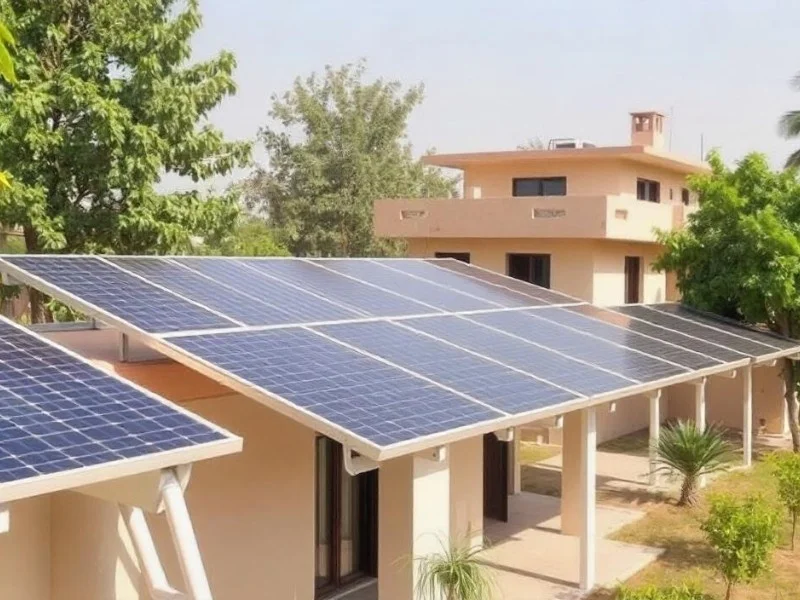To understand, the Green Energy Open Access mechanism, we need to first understand the Open Access mechanism in India and for this let’s do a little time travel to understand why Open Access was introduced in the first place. In 2003, the Electricity Bill was passed by both Houses of Parliament, received the President's assent, and was notified in the Gazette of India.
The Electricity Act sought to better coordinate development of the power sector in India, providing a comprehensive framework for power development. Key objectives include consolidating laws relating to generation, transmission, distribution, trading and the use of electricity; and promoting competition in the industry; promoting efficient and environmentally friendly policies and also the Open access Regulations.
The Electricity Act, 2003 introduced Open Access
- To improve reliability of power supply
- Promote competition among suppliers
- Enhance power supply quality by giving buyers and suppliers a choice.
Open access is a mechanism through which consumers with a connected load (sum of all loads) of 1 MW or more can directly purchase energy from the generators or open market instead of distribution companies (DISCOMs, as was the case earlier).
How did it help?
- It has helped commercial and industrial(C&I) consumers reduce their electricity costs by sourcing cheaper power.
- The Act brought in the fair/non-discriminatory use of transmission lines, distribution systems or associated facilities by any licensee or consumer as per the regulations of the appropriate commission.
Now we understand Open Access, but Why Green Open Access? What was the objective?
- The previous system did not have a structure to help commercial and industrial (C&I) consumers access renewable energy. As a result, there was a continued reliance on fossil fuel-based grid power. This dependence restricted consumer's energy options and made them vulnerable to price fluctuations and supply interruptions.
- Moreover, In August 2022, India revised its Nationally Determined Contributions (NDCs), pledging to achieve net-zero emissions by 2070. It aims to meet half of its total installed capacity from non-fossil fuel energy sources by 2030 and reduce its emissions intensity by 45% relative to its gross domestic product (GDP) by 2030, compared with 2005 levels. As of 2024, we have reached 46% of the total installed capacity from non-fossil fuel energy. To align with the NDCs, the Ministry of Power introduced the Green Energy Open Access (GEOA) Rules in June 2022.
What does the Green Energy Open Access Rules say?
- Consumers with a connected load exceeding 100 kW can engage in open access to Renewable energy through various methods, including
Setting up their own RE plant, entering into a power purchase agreement (PPA)with a Renewable Energy developer, or establishing a captive power plant
Eligibility criteria
- Any consumer (with single or multiple connections) having aggregated contract demand/sanctioned load ≥ 100 kilowatts (kW)
- No capacity limit for captive consumers, this encourages self-sufficiency and reduces the burden on traditional power grids.
Features of Green Energy Open Access Rules
- Inclusivity The limit reduction from 1 MW to 100 kW for green energy enables small consumers also to purchase renewable power through open access and to go green.
- Green Power Consumers are entitled to demand a supply of Green Power from Discoms. Discoms would be obligated to procure and supply green power to eligible consumers.
- Streamlining and Time-Bound These Rules have streamlined the overall approval process for granting open access. Time-bound processing by bringing uniformity and transparency in the application as well as approval of open access through a national portal has been mandated. Approval for Green Open Access is to be granted in 15 days or else it will be deemed to have been granted.
- Set Charges/fees The rule provides certainty on open access charges to be levied on Green Energy Open Access Consumers which include transmission charges, wheeling charges, cross subsidy surcharge, standby charges wherever applicable, banking charges and other fees and charges such as Load Dispatch Centre fees and scheduling charges, deviation settlement charges as per the relevant regulations of the Commission.
- Clarity on billing Cap on increasing of cross-subsidy surcharge as well as the removal of additional surcharge.
- Incentivize the consumers to go green. Consumers will be given Green Certificates if they consume green power and will also be facilitated.
- Common Portal Easy Access through Green Open Access Registry Portal. You can easily register and apply for Green Energy Open Access through the Green OpenAccess Registry portal.
What is the impact of the rules?
The GEOA (Green Energy Open Access) Rules have changed the renewable energy sector in India. These rules have made it easier for more people to access and participate in the market. In the past two years, the amount of installed renewable energy capacity has increased, and new companies have entered the market. Clearer regulations at the central and state levels have created a stronger framework, making operations more transparent and easier to manage.
How do MSMEs benefit?
Untapped Micro, Small and Medium Enterprises (MSMEs) Segment. The eligibility reduction from 1MW to 100kW has opened doors for smaller enterprises, particularly within the MSME segment, which accounts for roughly 25% of India’s industrial sector’s energy consumption.
MSMEs with a connected load of more than 100kW can either supply to the grid via green open access through their solar rooftop power plants or purchase green power from the grid.
While supplying through the GEOA might be rare considering the energy generated from the rooftop solar might not be excess and is wholly utilized by the MSME operations.
Some factors could make MSMEs participate in Green Open Access:
- The increasing pressure from MSMEs’ end consumers to enhance operational sustainability and the government concurrently imposing Renewable Purchase Obligations (RPOs) on smaller consumers will significantly promote renewable energy adoption in MSMEs.
- MSMEs with space and technical constraints will prefer open access to rooftop solar.
Benefits
- Solar energy is cheaper than grid electricity in most cases hence MSMEs can procure cost-effective solar power.
- Renewable energy contracts often come with fixed rates for years, unlike grid electricity, where prices can go up. This stability helps MSMEs manage costs better.
- Global buyers are increasingly looking for suppliers who use green energy. If an MSME is an exporter to the EU in certain industries like steel, and chemicals, they will have to adhere to the CBAM (Cross-border adjustment Mechanism) taxes if they do not reduce their emissions as per the said rules.
- MSMEs, especially in rural or semi-urban areas, often face power cuts or unreliable electricity. Local renewable energy (like a nearby solar farm) through GEOA ensures a reliable power supply.
There are still challenges to GEOA in terms of inconsistent state-level timelines and charges, Restrictive Energy Banking etc. making the adoption slower. There needs to be serious regulatory shifts to improve the adoption by all stakeholders be it big or small.
Conclusion
Since the release of the GEOA Rules in June 2022, India’s C&I renewable energy open-access market has witnessed remarkable growth and has opened doors for small consumers and generators. The market recorded a compound annual growth rate of 46% between the fiscal year (FY) 2022 and FY2024, expanding from 10.2 gigawatts (GW) in 2022 to an impressive cumulative of 18.7 GW in FY2024. Hence it is clear that Green Energy Open access will undoubtedly boost India’s transition to clean energy with better and standardized policies across its states.

.webp)
.webp)
.webp)


.jpg)
.jpg)







.jpg)





.jpeg)











.jpg)


.png)
.png)
.png)
.png)
.png)
.png)


.png)


.jpg)
